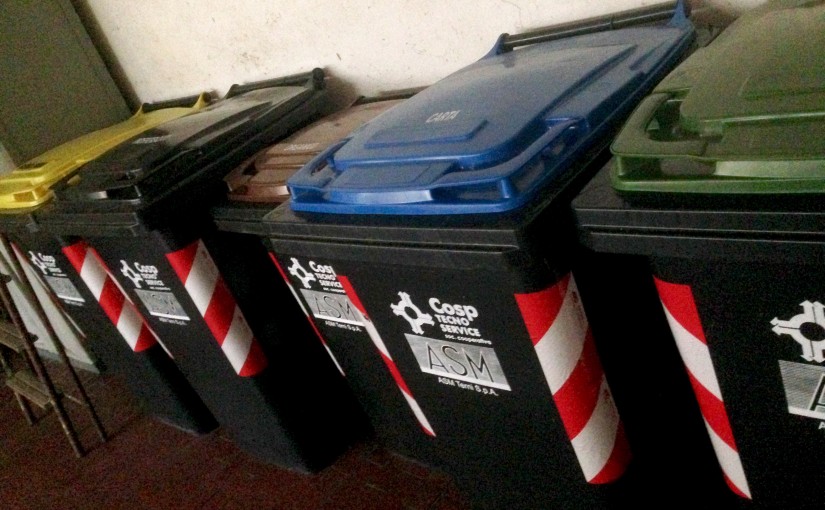“What’s a glass can?” I asked my mother.
“I don’t know, what’s a glass can?”
“It’s not a riddle, it’s on that billboard we just passed. We pass it all the time and every time I wonder. It doesn’t make sense.”
“Next time you see it, remind me, I’ll see if I can figure it out.”
I was about ten, and on the verge of my earliest recalled experience of environmental outrage.
In California of the fifties and sixties – and likely in many other places, too – paper, metal, and bottle drives were common means for churches and charities to raise cash. Word would go out to membership to bring those stacks of newspapers and magazines building up in your garage to the parish hall’s parking lot on the fifth Sunday of Pentecost where a large dumpster would be waiting. Volunteers with ladders took the paper, threw it in the bin, then in the next few days it would be weighed and sold to a paper mill to be resurrected as new newsprint. That same principle applied to cans and non-deposit bottles. Trained to do so during the War, all the families I knew still squashed cans and placed them in a separate bin, well into the sixties. For soda bottles, of course, a deposit was made at purchase that could be redeemed, by anyone, at any grocery selling the bottler’s wares. A number of kids I knew circulated their neighborhoods with red wagons, collecting bottles to augment allowances.
In January 2016, Umbria – and perhaps all of Italy, I’m not sure – switched from using large, bell-shaped, community recycling containers to individual bins. A larger apartment building is assigned standard trashcan-sized bins that all residents use, but independent households, or those in small buildings, are issued a set of five, color-coded, little bins, certain types to be placed on the street for pick up on certain mornings.
Among the under-sung heroes of the pandemic, by the way, are the sanitation workers of the world. Huzzah!
My fear was that all the organization of recyclables done by each of us with a front door key was rendered neutral by those contracted to recycle who found it more convenient to dump the collected trash into the nearest swamp. My fears were assuaged somewhat by a friend whose wife works at a recycling facility nearby, and who told me about the machines that separate materials into types, and melt or compact them into bales which are sold to packaging companies to make new packaging.
Somewhat assuaged.
As much as I love the people who run the local supermarkets, I do not love the packaging. Pasta that as recently as a year ago was sold in a cardboard box is now offered in a plastic sleeve. A label made from paper that sufficed to identify a product for generations, now must have the slick, sophisticated look of a polymer. Even my favorite deli-counters serve takeout in plastic clamshells when waxed cardboard would, and used to, do as well. And this explosion of single-use plastic is happening coincident with a growing awareness worldwide of what a horror has been created by its overuse. Given a choice, I choose non-plastic delivery methods, but the choice is not often offered; even at outdoor markets. Inroads have been made – for instance, plastic bags here must now be degradable – but compared to the enormity of the problem, they seem pathetically inadequate.
I pointed to the billboard next time we passed, and my mother couldn’t make sense of it either. So on subsequent drive-by’s, I read more carefully. And I got it.
“It says the root beer comes in a no-deposit, no-return bottle! That instead of taking it back to the store to be reused, you just throw it away!”
“No, that couldn’t be right.”
“That’s what it means by ‘disposable’. A bottle isn’t disposable! And neither is a can!” and I remember going off on a rant that is still going on, at least internally, even today.
But what, besides being a devoted recycler since before it was called recycling, have I done about it? A lifetime of outrage seems not to have accomplished much.
On a separate but related issue, I remember a film we were shown in 10th grade science about fossil fuels. “At current rates of consumption we will have used up all known reserves of carbon-based fuel by 2020,” it said, illustrating that prediction with charts and graphs. “And as a bi-product of its use, we may have irreversibly destroyed the delicate equilibrium of the global climate.” The teacher followed up with questions and answers, we finished the day, and many of us were then picked up by parents driving v8 engines to be taken five blocks to air-conditioned homes. That was 1965.
I was proud then of having walked to school – two miles and even in the driving drizzle – and still am.
I bring this up today because it is always on my mind, and maybe too, because I dearly hope that more than a few of us environmentalists – practicing or merely opinionated, ancient and youthful alike – are pondering the state we find ourselves in. Once public health is on a secure footing, hands and minds will need to return to rebuilding an economy – that is, a means by which goods and services are traded. It doesn’t seem likely from this vantage that there’s any real going back to what was in place two months ago. Rebuilding will take time, and needs to be bottom-up creative. So, as we’re at it, can we please build an economy that makes more sense than a “glass can”?
